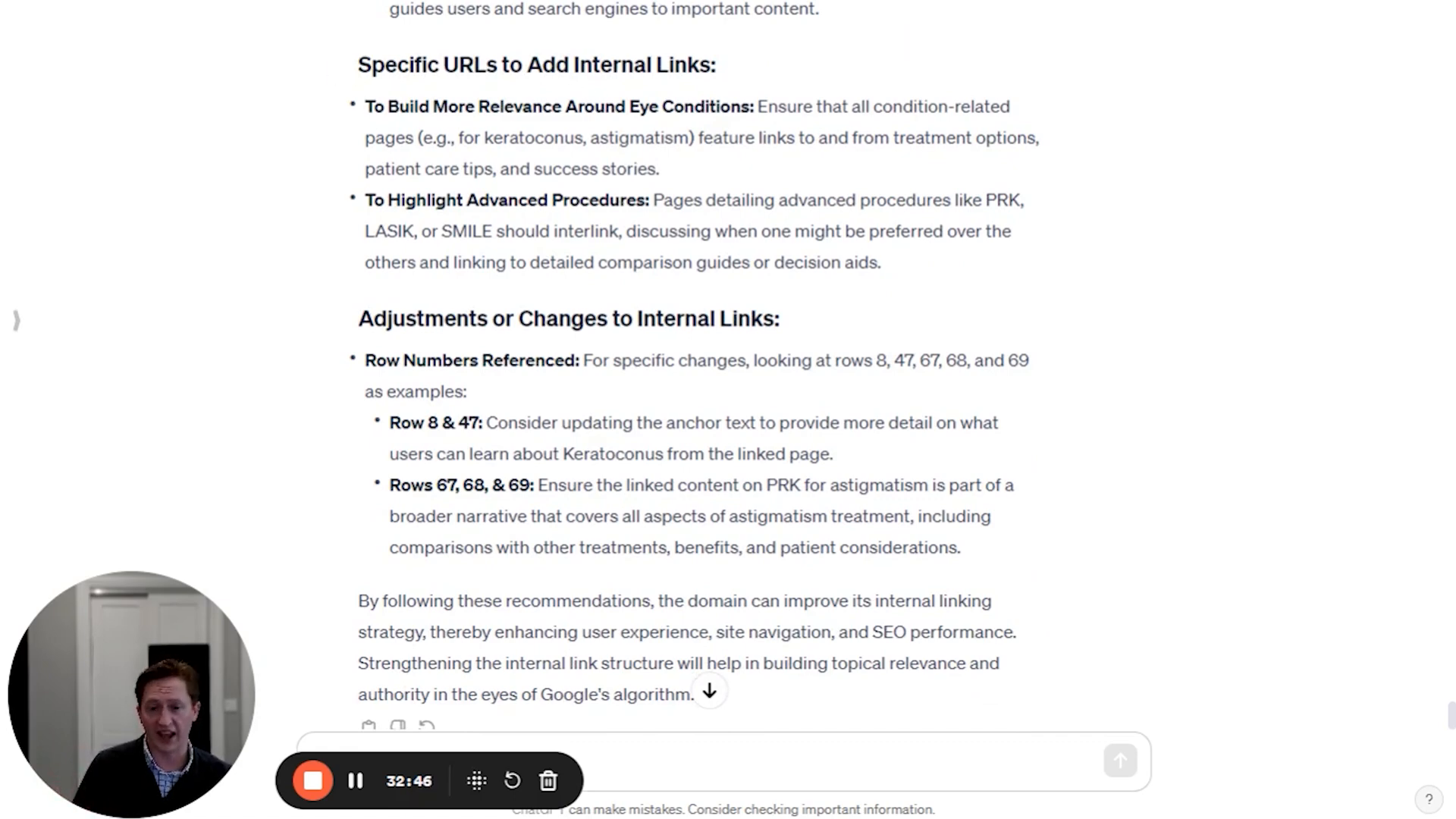ChatGPT Screaming Frog Google Search Console: Boosting Your SEO Game
Are you ready to dive into the world of SEO with the help of AI? In this blog, we’ll explore how to leverage ChatGPT, Screaming Frog, and Google Search Console to enhance your existing content’s ranking. Whether you’re a newbie or a seasoned pro, these tips will help you supercharge your SEO strategy! 🚀
Introduction to AI and SEO 🤖💡
Hey there! Let’s jump into how AI, especially ChatGPT, plays a big role in SEO. AI tools can save us loads of time while boosting our content’s visibility. Imagine taking hours of analysis and squeezing it into just a few minutes! That’s the magic of using ChatGPT alongside tools like Screaming Frog and Google Search Console.
Why Use ChatGPT for SEO?
ChatGPT can analyse data from Google Search Console easily. You can export CSV files and let ChatGPT do the heavy lifting. This means you can focus on what really matters—improving your content!
The Power of Analysis
With the right methods, you can double, triple, or even quadruple your traffic. But remember, this works best for content that already gets some traffic. If your site is brand new, you might need to start with other strategies first.
So, get ready to learn how to harness the power of AI for your SEO efforts. The results can be game-changing!
Using ChatGPT for SEO Analysis 📈🤖
When I use ChatGPT for SEO analysis, I start by telling it to act like an SEO expert. This way, I get better insights on what Google wants from my content. Always remember, though, to have a human editor review the output. ChatGPT can sometimes create content that isn’t accurate or is too generic.
By pairing ChatGPT with tools like Screaming Frog and Google Search Console, I can identify key phrases and keywords. This helps in optimising existing content, making it more relevant and engaging for users.
The Role of Human Editors in SEO ✍️📊
Human editors are crucial in SEO. They ensure content is accurate and engaging. While tools like ChatGPT help, a human touch is essential. Editors refine ideas and maintain quality, balancing automation with creativity.
Using ChatGPT for SEO Content Creation ✍️🚀
When it comes to creating SEO content, I find ChatGPT to be an absolute game-changer. It can help me refine my existing content to make it more relevant and engaging. I usually start by gathering data from Google Search Console. This data helps me identify which queries my content is already ranking for.
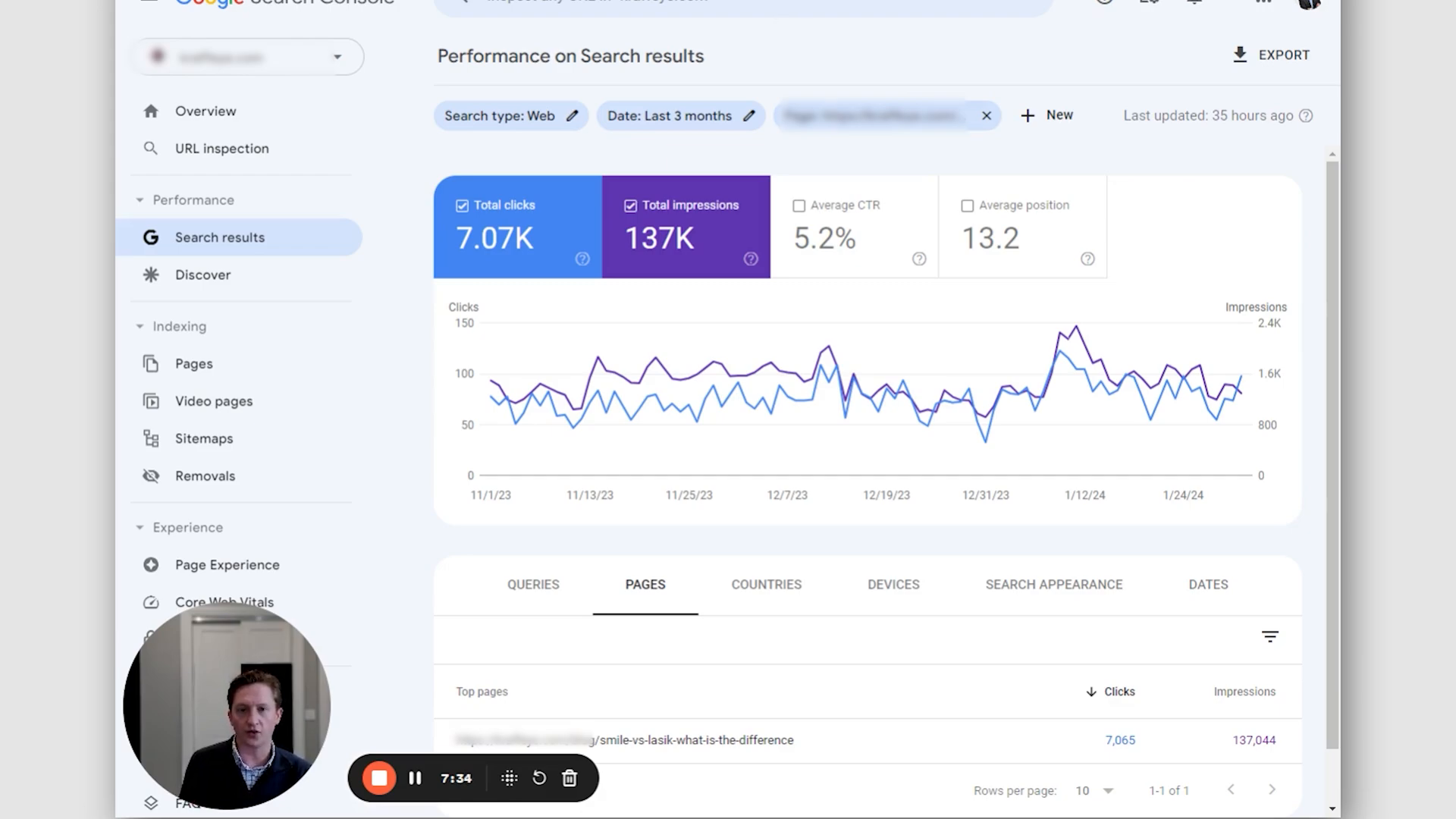
Steps to Enhance Your Content
Here’s how I use ChatGPT for content creation:
- Export the data from Google Search Console as a CSV file.
- Upload the CSV file to ChatGPT.
- Ask ChatGPT to analyze the content and suggest improvements.

By focusing on the queries that don’t appear in the content, I can make targeted changes. This not only boosts relevance but also improves the chances of ranking higher.
Why This Method Works
The beauty of this approach is that it combines data-driven insights with AI creativity. While ChatGPT suggests changes, I always have a human editor review the output. This ensures that the content remains accurate and engaging.
Incorporating ChatGPT Screaming Frog Google Search Console into my workflow has significantly improved my content strategy. I can now create SEO-friendly content faster and with more confidence!
Improving Topical Relevance with ChatGPT 📚✨
When it comes to boosting the authority of a webpage, I’ve found that using ChatGPT can be a total game-changer. It’s all about making sure the content we create aligns with what Google considers relevant. Forget what I or my clients think; what matters is Google’s perspective! So, let’s dive into how I enhance topical relevance using ChatGPT.
Understanding Google’s Relevance
The first step in improving topical relevance is to identify the keywords Google deems important for a specific URL. I usually begin by asking ChatGPT to analyse the data from Google Search Console. For instance, I might prompt it with, “Based on the provided data, what’s the most important keyword for this content?”
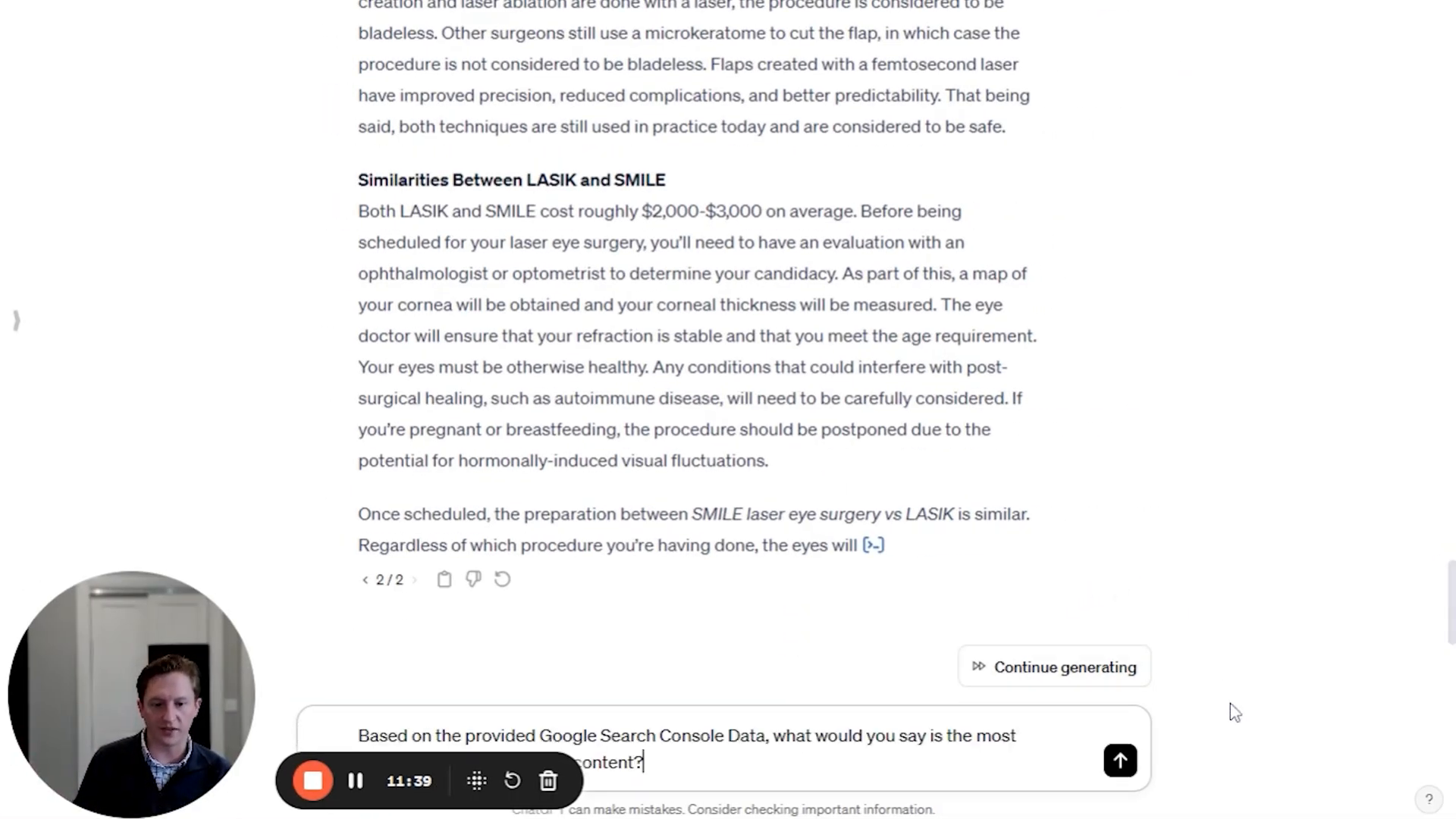
Once I have that keyword, I search for it on Google to see what questions appear in the “People also ask” section. This section is a goldmine for figuring out what Google thinks is relevant to that keyword.
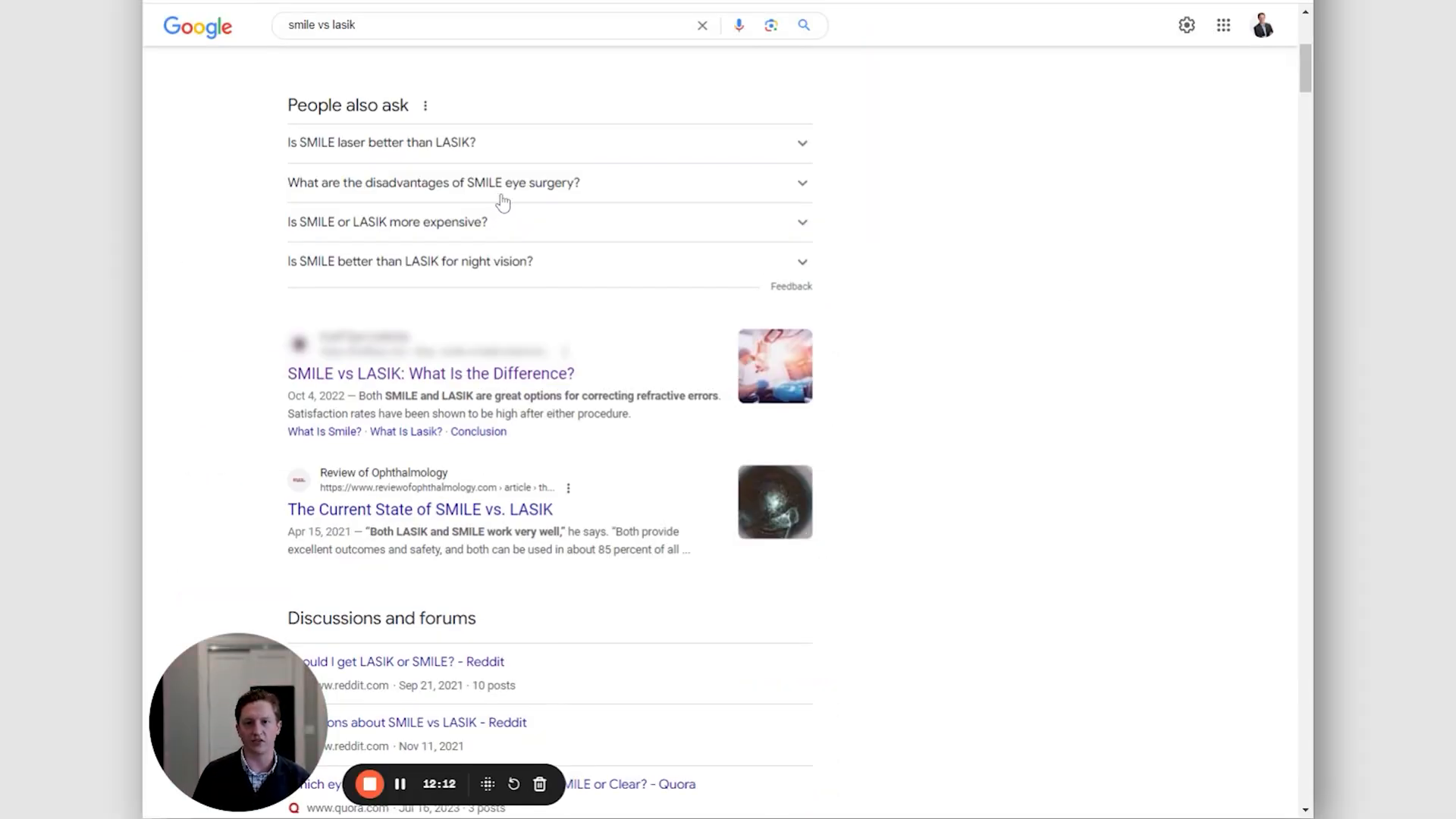
Generating Content with FAQs
After gathering a list of questions, I copy them and paste them into ChatGPT. I then ask it to determine which questions are already answered in the existing content and which ones aren’t. This helps me focus on questions that need new answers, ensuring that the content is comprehensive.
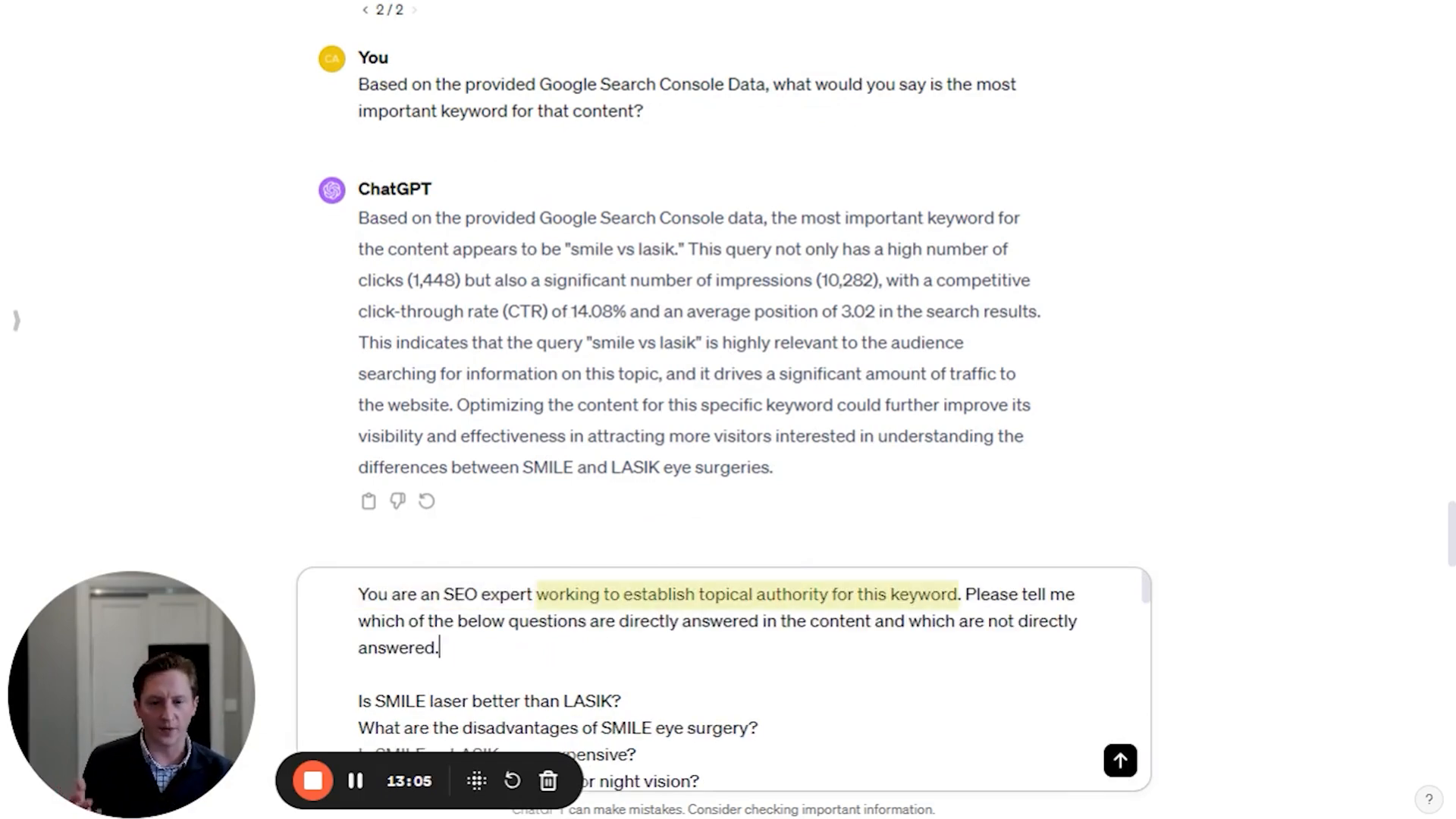
Next, I prompt ChatGPT to write an FAQ section based on the questions that weren’t directly answered. This FAQ section is placed at the end of the webpage, just above the footer. By doing this, I’m making sure that Google sees the content as relevant and authoritative.
Creating Supporting Content
But what if the keyword is highly competitive? That’s when I generate supporting content. This involves creating additional articles that dive deeper into the questions I’ve gathered. I ask ChatGPT which FAQ questions would justify a new article and request a suggested title tag and headings for that article.

This way, I have a clear path for writing content that not only answers the questions but also links back to the main URL, reinforcing its relevance.
Content Gap Analysis
After optimising a specific URL, I take a step back and consider the entire website. I perform a content gap analysis to find out what topics I have relevance for but haven’t written about yet. To do this, I export data from Google Search Console and analyse it with ChatGPT.
I prompt ChatGPT to recommend new articles based on the inferred topics from the existing content. This helps me identify what I should write next to enhance topical authority.
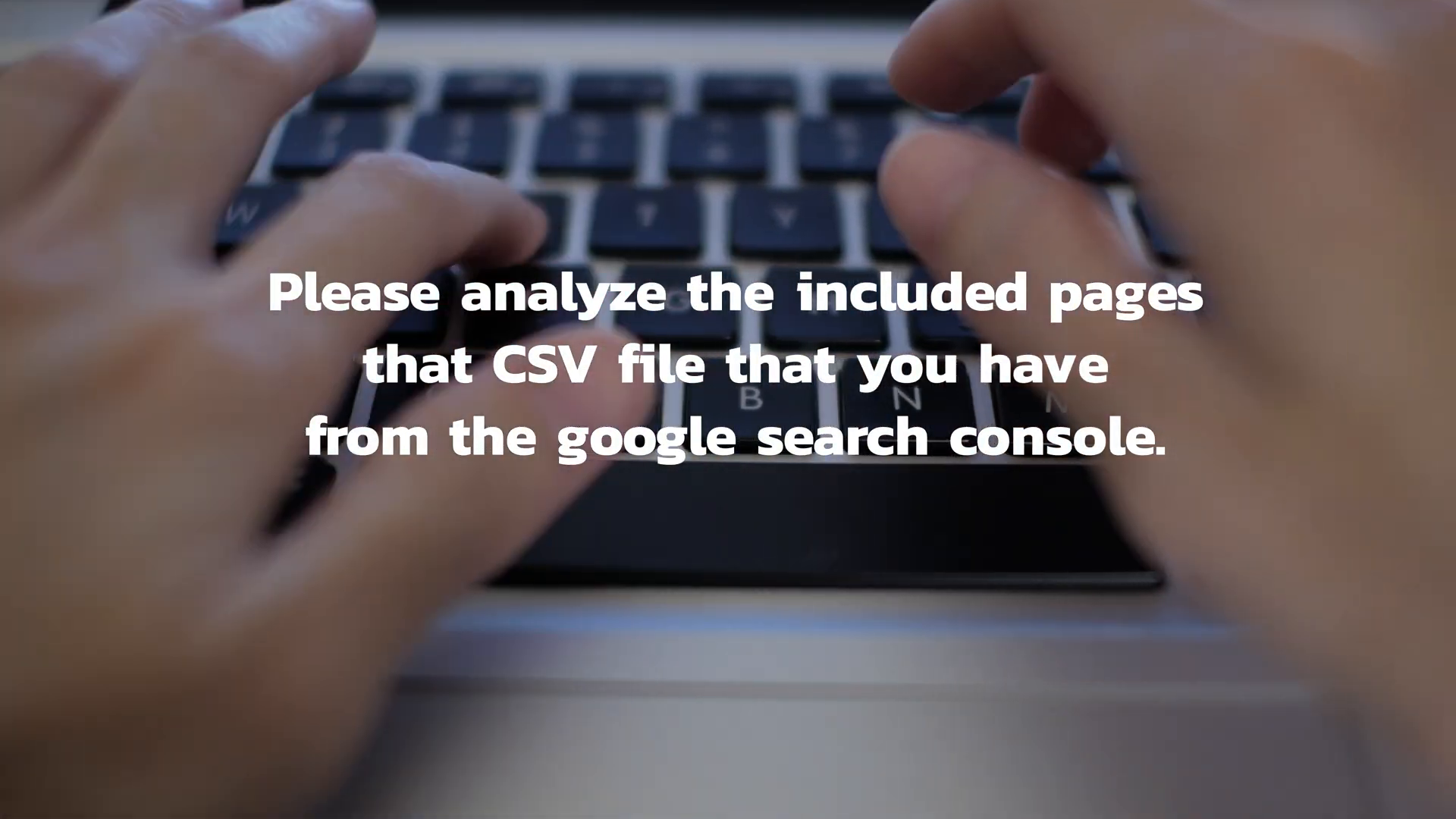
Improving Click-Through Rates (CTR)
Once I have my content plan, I also focus on improving the click-through rates (CTR) of existing pages. For this, I utilise Screaming Frog to gather data on page titles and meta descriptions. By combining this information with Google Search Console data, I can identify pages that need a boost.
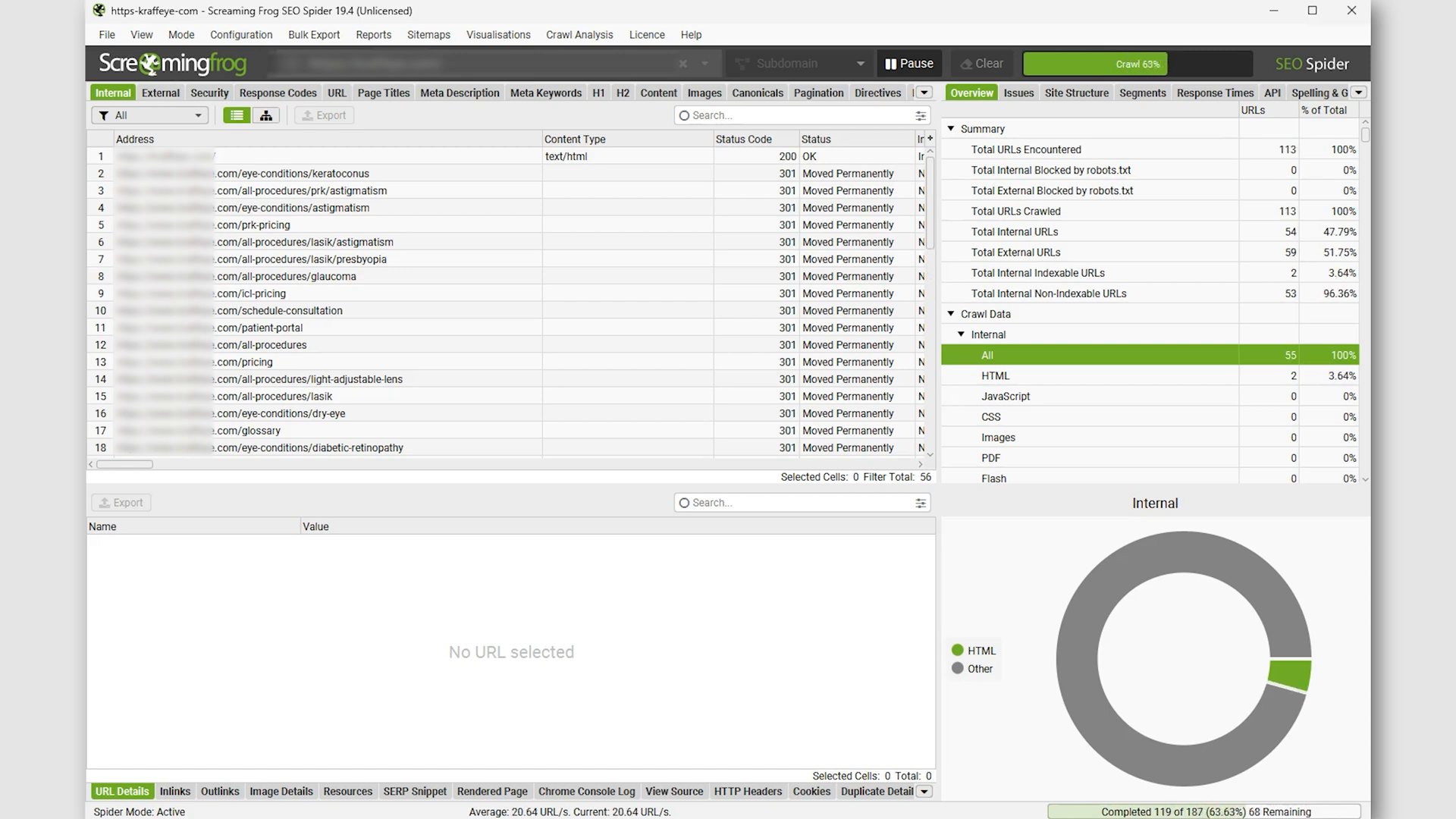
Then, I ask ChatGPT to suggest new title tags and descriptions for these URLs. This can help increase visibility and drive more traffic to the pages.
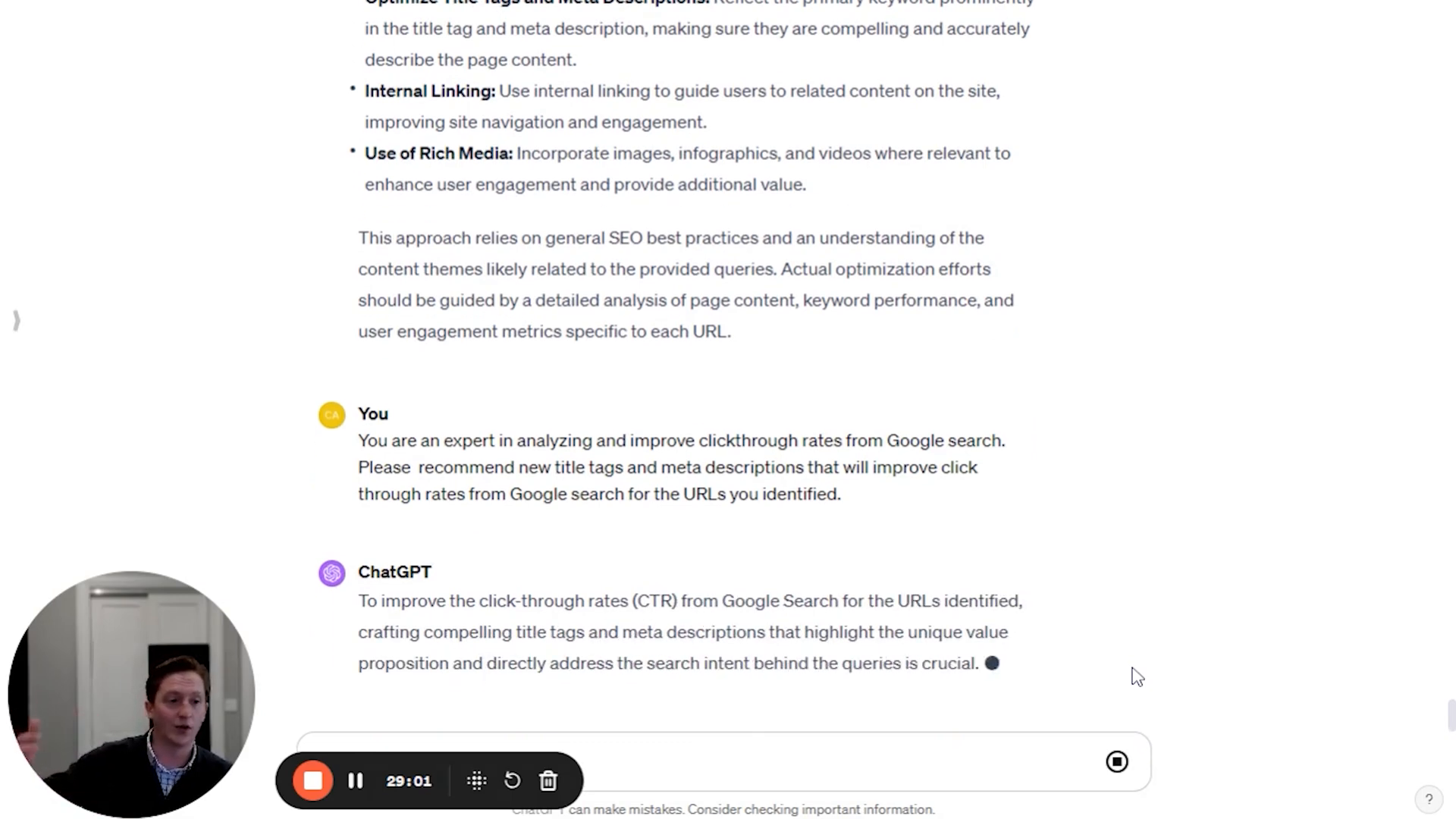
Conclusion
Using ChatGPT Screaming Frog Google Search Console together has made a huge difference in how I approach SEO. By focusing on what Google finds relevant and crafting comprehensive content strategies, I can significantly boost the topical relevance of my pages. This not only helps with rankings but also engages visitors better. So, if you’re looking to enhance your SEO game, give these techniques a try!
Using ChatGPT for Internal Linking Analysis 🔗🤖
Internal linking is super important for SEO. It helps Google understand which pages are related. I love using ChatGPT for analysing my internal link structure. First, I get a list of all internal links from Screaming Frog. I simply export the anchor text, which shows the source, destination, and anchor text of each link.

Once I have that data, I paste it into ChatGPT and ask it to analyse the links. I prompt it with a request to act like an SEO expert. This way, I get insights on how to improve my internal linking strategy.

Getting Specific Recommendations
ChatGPT helps me identify specific areas to improve. For instance, I ask it to provide specific row numbers for links to adjust. This makes it easier to act on its suggestions, rather than just getting vague advice.
By using ChatGPT Screaming Frog Google Search Console, I can enhance my internal linking. This not only boosts SEO but also improves user experience. It’s a win-win!
Conclusion: The Power of AI in SEO 🚀🤖
In my journey with SEO, I’ve realised that using AI tools like ChatGPT can significantly enhance our strategies. By leveraging ChatGPT Screaming Frog Google Search Console, I can analyse data quickly and efficiently. This means I can identify which content needs improvement and how to make it more relevant.
One of the biggest advantages is the time saved. What used to take hours can now be done in minutes! It allows me to focus on creative aspects while ensuring that the technical side is covered. Plus, with the right human review, we can ensure that the content remains engaging.
In conclusion, AI is not just a tool; it’s a game-changer in SEO. As I continue to explore its capabilities, I’m excited about the future of content creation and optimisation. If you’re not using AI yet, now is the time to dive in and see the amazing results for yourself!
FAQ ❓🤖
Got questions about using ChatGPT Screaming Frog Google Search Console for SEO? You’re not alone! Here are some frequently asked questions that might help clear things up.
What is the main benefit of using ChatGPT for SEO?
Using ChatGPT can save time by quickly analysing data and providing insights that help improve your content’s ranking. It allows you to focus on creating engaging content while it handles the heavy lifting of analysis.
Can I trust the content generated by ChatGPT?
While ChatGPT provides valuable suggestions, it’s essential to have a human editor review the content. This ensures accuracy and keeps the content engaging and relevant.
How do I start using ChatGPT for my SEO strategy?
Begin by exporting data from Google Search Console. Then, upload that data to ChatGPT and ask for analysis and improvement suggestions. It’s a straightforward process that can yield great results!
Is it necessary to use Screaming Frog with ChatGPT?
Not necessarily, but using Screaming Frog alongside ChatGPT enhances your analysis. It provides detailed insights into your website’s structure, which can be very helpful for SEO.
How often should I update my content using these tools?
Regular updates are key! I recommend revisiting your content every few months to ensure it’s still relevant and optimised based on the latest data from Google Search Console and Screaming Frog.
